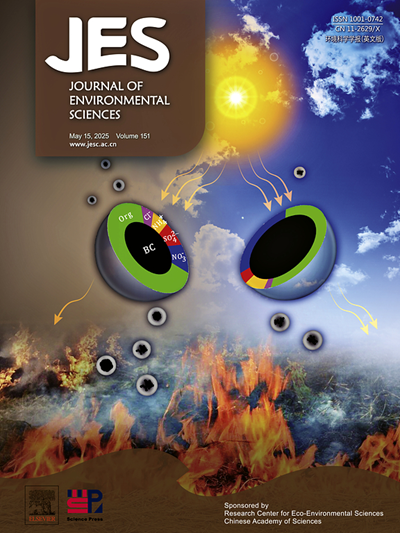Deciphering the interaction of sulfamethoxazole with biodegradable versus conventional, virgin versus aged microplastics in aquatic environment
IF 5.9
2区 环境科学与生态学
Q1 ENVIRONMENTAL SCIENCES
引用次数: 0
Abstract
Co-exposure of pharmaceuticals and microplastics (MPs) significantly exacerbates the aquatic environmental pollution issue. While MPs are identified as carriers of pollutants, research on the adsorption behaviors of biodegradable and conventional MPs to pharmaceuticals limited. The study investigated the adsorption behavior of conventional MPs (polystyrene and polyethylene terephthalate), biodegradable MPs (polylactic acid (PLA) and polybutylene succinate (PBS) for sulfamethoxazole (SMX). Meanwhile, changes in physical-chemical properties, including morphology, crystallinity, hydrophobicity and structures of MPs after aging (e.g., ultraviolet treatment) were investigated. Results exhibited that the oxygen-containing functional groups of MPs surface increased after ultraviolet treatment and enhanced the adsorption capacity for SMX, except for PLA. PLA exhibits the highest adsorption capacity, primarily due to its higher hydrophobicity and larger pore size. In contrast, PBS shows the lowest adsorption affinity for SMX because of its hydrophilicity and small pore size. The adsorption capacity of degradable MPs after aging is greater than that of non-degradable MPs. Electrostatic interaction and hydrophobic interaction are the main mechanisms of adsorption of virgin MPs, while hydrogen bond interaction and electrostatic interaction are the primary adsorption mechanisms for aged MPs. These results contribute to understanding the co-transport and migration of SMX and MPs in the environment, and furnish the necessary data for their ecological risk assessment.
水生环境中磺胺甲恶唑与生物可降解与常规、原生与老化微塑料的相互作用
药物和微塑料(MPs)的共同暴露显著加剧了水生环境污染问题。虽然MPs被认为是污染物的载体,但可生物降解和常规MPs对药物的吸附行为研究有限。研究了常规MPs(聚苯乙烯和聚对苯二甲酸乙二醇酯)、可生物降解MPs(聚乳酸(PLA)和聚丁二酸丁二醇酯(PBS))对磺胺甲恶唑(SMX)的吸附行为。同时,研究了MPs在老化(如紫外线处理)后的物理化学性质,包括形貌、结晶度、疏水性和结构的变化。结果表明,除PLA外,紫外处理后MPs表面含氧官能团增加,对SMX的吸附能力增强。PLA表现出最高的吸附能力,主要是由于其更高的疏水性和更大的孔径。相比之下,PBS由于其亲水性和小孔径,对SMX的吸附亲和力最低。老化后可降解MPs的吸附量大于不可降解MPs。静电相互作用和疏水相互作用是原生MPs的主要吸附机制,而氢键相互作用和静电相互作用是老化MPs的主要吸附机制。这些结果有助于了解SMX和MPs在环境中的共同迁移和迁移,并为其生态风险评估提供必要的数据。
本文章由计算机程序翻译,如有差异,请以英文原文为准。
求助全文
约1分钟内获得全文
求助全文
来源期刊

Journal of Environmental Sciences-china
环境科学-环境科学
CiteScore
13.70
自引率
0.00%
发文量
6354
审稿时长
2.6 months
期刊介绍:
The Journal of Environmental Sciences is an international journal started in 1989. The journal is devoted to publish original, peer-reviewed research papers on main aspects of environmental sciences, such as environmental chemistry, environmental biology, ecology, geosciences and environmental physics. Appropriate subjects include basic and applied research on atmospheric, terrestrial and aquatic environments, pollution control and abatement technology, conservation of natural resources, environmental health and toxicology. Announcements of international environmental science meetings and other recent information are also included.
 求助内容:
求助内容: 应助结果提醒方式:
应助结果提醒方式:


